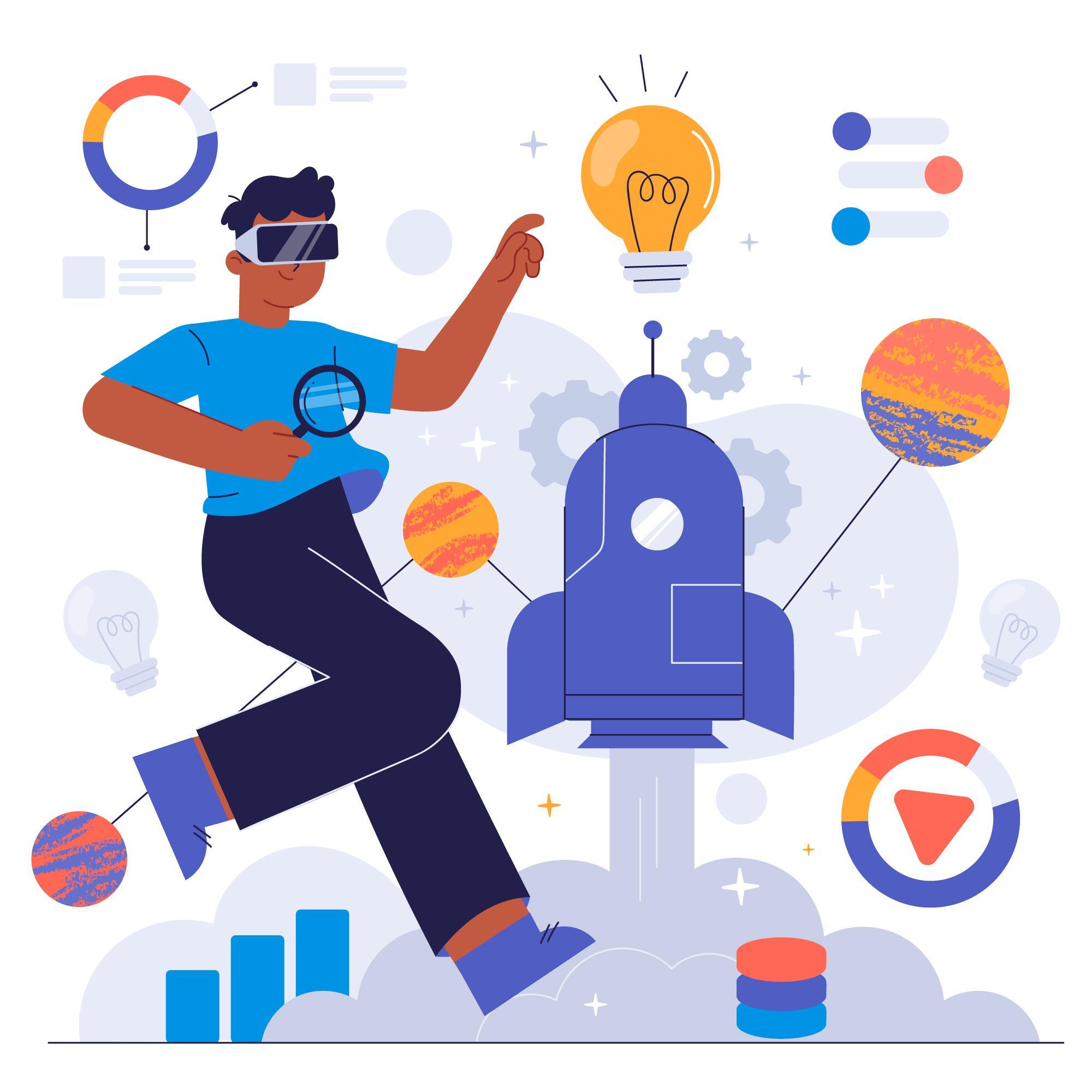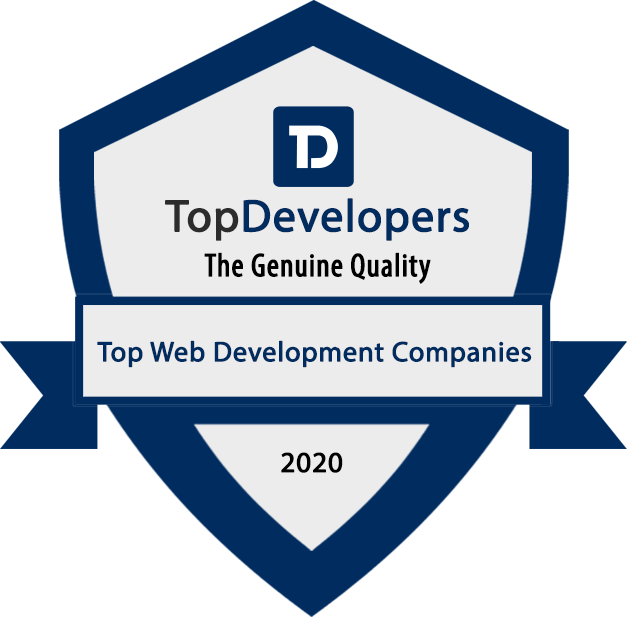Building AI products is an exciting frontier, but diving headfirst into complex solutions without validation can be a costly mistake. This is where an AI Product MVP—Minimum Viable Product—comes into play. Unlike traditional MVPs, which focus on core features to test market fit, AI MVPs revolve around proving that an AI model can meaningfully address a real problem, even at a basic level.
For startups, solo founders, or enterprise innovation teams, the MVP phase is a golden opportunity. It's a chance to test a hypothesis, understand user behavior, and gather critical data with minimal resource investment. The rapid evolution of AI tools—from large language models to vision-based systems—means it's now possible to build powerful prototypes faster than ever before. However, the path to launching an AI MVP is nuanced.
This blog walks through the essential framework to create a Minimum Viable AI Product—from identifying the problem to choosing the right models, crafting a simple interface, and defining success metrics. It is designed for builders and thinkers looking to turn AI ideas into tangible, testable solutions without overengineering.
Why AI MVPs Are Different
When developing a Minimum Viable Product for an AI solution, it's important to understand that this process diverges significantly from building conventional digital products. AI introduces new layers of complexity—namely, its reliance on data, the probabilistic nature of its outputs, and the need for continual iteration. These variables affect not just how the product functions, but also how it should be designed, tested, and scaled. Teams that approach AI MVPs with a traditional mindset often encounter delays, misaligned expectations, or even project failures. Instead, recognizing the distinct nature of AI early on allows for more informed decisions and better long-term outcomes.
An AI MVP is not just a slimmed-down version of a final AI system; it’s a strategic test to see whether the AI component can deliver value, even in a barebones format. While speed and efficiency still matter, the core objective is to verify feasibility and user relevance. That means focusing less on visual polish or extensive features and more on collecting feedback, validating the AI's effectiveness, and learning what needs to be improved through real-world use. Treating an AI MVP as its own unique product category will make your team more agile and far better prepared to iterate quickly.
Data dependency
AI models thrive—or fail—based on the quality and relevance of the data they ingest. Unlike traditional systems that rely on fixed business logic, AI solutions must be trained using representative data. For an MVP, even a small dataset can work, but it must be well-labeled and accurately reflect the problem space. If your AI MVP is built on weak or biased data, the model’s predictions will falter and user trust will diminish. Therefore, early-stage AI development must begin with focused attention on data collection and preprocessing rather than diving directly into model building.
Model development vs. software development
While conventional product development relies on coding and feature building, AI development is model-centric. Developers must select, train, validate, and optimize machine learning models before even thinking about full-scale deployment. For MVPs, this means balancing the use of pre-trained models with custom tweaks. Unlike software engineering, where a function either works or doesn't, AI outputs exist on a spectrum of probability. This introduces a level of uncertainty that can only be addressed through iterative tuning and model refinement, which is a fundamental difference in mindset and execution.
The iterative nature of AI
AI MVPs aren’t built once and done—they evolve. You launch a version, observe how the model behaves in real environments, and then retrain it using fresh data or feedback. Every deployment cycle improves performance incrementally. This is in stark contrast to most traditional MVPs, which are built to test features or interfaces rather than intelligent decision-making. Because AI systems learn over time, early user interactions become invaluable training inputs. This iterative loop—collect, learn, improve—is essential and should be part of the MVP strategy from day one.
Viewing AI MVPs through this distinctive lens empowers product teams to make smarter, leaner choices early in the build process. It helps allocate resources where they truly matter—validating the AI’s potential, refining model behavior, and learning from real usage patterns. By embracing what makes AI different, you unlock a more realistic and productive path to scaling intelligent products. The result is an MVP that not only functions but teaches you exactly how to grow your AI solution effectively.
Key Components of an AI MVP
Creating an AI MVP isn't just about plugging in a machine learning model and calling it a day. It requires thoughtful planning and a deep understanding of what needs to be validated at the earliest stage. The goal is to develop a streamlined version of your AI product that provides just enough functionality to test your assumptions and gather valuable feedback. To do this successfully, you must identify and include a few non-negotiable components—each playing a pivotal role in ensuring the MVP is both functional and informative.
These elements help you move beyond just building a demo to actually validating your product idea with real users. By keeping your MVP focused yet effective, you can avoid overbuilding while still collecting the insights needed to refine your product. Understanding these foundational pieces also makes it easier to communicate your vision to stakeholders, collaborators, or investors who may be evaluating your project. Ultimately, these components are the structural pillars that allow your AI MVP to stand on its own and evolve into a more robust product over time.
Problem Statement
Every strong AI MVP starts with a clearly defined problem. Before writing a single line of code or collecting data, you must understand the pain point your product is solving. The problem should be specific, measurable, and important enough that users would consider a new solution. A vague or generic problem leads to unclear success metrics and weak adoption. Defining this early helps ensure your model and user experience are both aligned with solving something meaningful, making every subsequent decision more focused and strategic.
Dataset
The dataset is the foundation upon which your entire AI solution rests. For an MVP, it doesn't need to be large, but it must be representative and clean. The dataset should reflect the kinds of inputs your AI will encounter in the real world and include labels if you're doing supervised learning. Investing in data collection and cleaning at this stage ensures your model produces useful outputs, even if it's not perfectly accurate. You can bootstrap initial datasets using open repositories, manual gathering, or internal archives.
Model Choice
Choosing the right model can make or break your MVP. For most early-stage AI products, starting with a pre-trained model saves time and resources while offering reasonable performance. Tools like Hugging Face, OpenAI, or Google AutoML provide ready-to-use models for text, images, or audio. If your problem requires domain-specific customization, lightweight fine-tuning may be necessary. Avoid building complex architectures from scratch at this stage. The model’s purpose is to validate functionality, not to demonstrate technical brilliance.
UX & Interface
The AI component may be the brains, but users interact through the interface—making this a critical part of your MVP. The interface doesn’t need to be beautiful, but it must be intuitive and usable. Whether it's a chatbot, dashboard, or mobile app, the goal is to allow users to experience the AI's core value proposition with minimal friction. It should clearly demonstrate what the AI can do, while also collecting user input and feedback wherever possible to inform future improvements.
Evaluation Metrics
Without clear metrics, it's impossible to know whether your AI MVP is working. Evaluation criteria could be technical (e.g., accuracy, precision, F1-score), operational (e.g., response time, error rate), or user-driven (e.g., satisfaction score, adoption rate). Choose metrics that tie directly to your problem statement and reflect real value for your users. Metrics should also guide your next steps—whether that means improving the model, collecting more data, or pivoting the approach altogether. They serve as your compass throughout the MVP lifecycle.
By aligning your AI MVP with these critical components, you build more than just a prototype—you create a reliable foundation for learning, validation, and growth. Each piece works in concert to prove that your AI-driven solution can meet a genuine need, even in its most basic form. This clarity sets you up for smarter iterations, better user engagement, and ultimately a more successful product down the line. Taking the time to get these fundamentals right will pay dividends far beyond the MVP stage.
Step-by-Step Guide to Building an AI MVP
Building an AI MVP involves far more than just writing code or choosing a machine learning model—it’s a structured process that requires understanding the problem, aligning the right resources, and executing in a way that encourages iteration and learning. The key to a successful AI MVP is clarity: knowing what you are validating, why it matters, and how you’ll measure success. Without a roadmap, teams risk wandering through data collection or model experimentation without delivering any meaningful output.
This step-by-step guide offers a clear sequence to go from idea to launch. It doesn’t assume you have deep AI expertise or massive datasets—instead, it focuses on what matters most at the MVP stage: speed, insight, and feedback. Each step is designed to maximize value with minimal waste, so you can build a lean, testable product that proves your concept works in the real world. Whether you’re working solo or with a team, following this guide will help streamline your workflow and set the stage for smarter iterations later on.
1. Research the Problem
Everything begins with a clear understanding of the problem you're trying to solve. Talk to potential users, analyze competitors, and explore use cases where AI can offer a real advantage—such as automation, personalization, or prediction. Avoid vague problems like “making things easier”; instead, target concrete inefficiencies that AI can uniquely address. This step ensures you're not building a solution in search of a problem, which is a common pitfall in early AI development. Market research also helps define who your MVP is for and what outcome would be considered successful.
2. Collect and Prepare Data
Data is the raw fuel for your AI model, and preparing it properly is critical—even for an MVP. Identify relevant data sources, such as public datasets, company logs, or manually gathered samples. Clean the data by removing duplicates, standardizing formats, and ensuring proper labels where needed. Pay attention to data diversity and balance to avoid biased outcomes. Even a small dataset can suffice at this stage, but it must be representative of the real-world scenarios your product will face. Well-prepared data sets the stage for a model that delivers meaningful results.
3. Build a Baseline Model
Instead of building a complex neural network from scratch, start with a pre-trained or off-the-shelf model to establish a quick proof of concept. Use platforms like Hugging Face Transformers, OpenAI APIs, or Google AutoML to spin up a working model quickly. Fine-tune it lightly using your data to improve relevance, but don’t get bogged down in advanced hyperparameter tuning. The goal here is not technical perfection—it’s validation. Does the model perform well enough to suggest that a full version is worth building? That’s the question your baseline model should help answer.
4. Design the MVP Interface
Your AI can’t generate value if users don’t know how to interact with it. Build a simple, clean interface—like a web dashboard, chatbot, or mobile screen—that highlights the AI’s core functionality. Use low-code platforms like Streamlit, Gradio, or Bubble to save time. The interface should enable users to submit input, see the AI’s output, and possibly provide feedback. Make sure it's focused on functionality rather than polish. Even a simple button and output field can be enough if it shows users what the AI can do and how it helps solve their problem.
5. Test and Measure
Launch your MVP with a small, targeted group of users. Monitor how they interact with it, what they find valuable, and where confusion arises. Collect quantitative metrics—such as accuracy, latency, and usage frequency—and qualitative feedback on perceived value and usability. Identify edge cases where the model underperforms and areas where the UX can be streamlined. Use this data to create a loop of continuous improvement. Testing is not a one-time event but an ongoing process that helps transform your MVP from a functional demo into a dependable product.
Following these steps allows you to bring clarity and discipline to what can otherwise feel like a messy or overwhelming process. Rather than building aimlessly, you’re creating with intent—validating the core functionality of your AI idea while setting up pathways for refinement. Every step builds upon the previous one, guiding you from abstract concept to something real, usable, and valuable. And with each iteration, your AI product becomes smarter, more reliable, and more aligned with user needs. This methodical approach ensures that your MVP doesn’t just work—it works with purpose.
Tools & Frameworks to Use
Choosing the right tools can make the difference between a drawn-out development cycle and a successful, fast-moving AI MVP. While AI may seem daunting due to its complexity, modern platforms and frameworks have dramatically lowered the barrier to entry. Whether you're a solo founder, a startup team, or an enterprise innovator, you now have access to powerful tools that abstract away much of the technical complexity. These tools help accelerate your journey from concept to working prototype, allowing you to focus on user needs, problem-solving, and real-world impact instead of just the technical heavy lifting.
Selecting the appropriate toolset should be guided by your use case, team skillset, and deployment goals. Some tools simplify UI creation, while others offer robust model management or one-click deployment options. The goal at the MVP stage isn’t to build a highly scalable infrastructure but to get something into users’ hands quickly. With the right tools, you can streamline development, gather insights faster, and iterate with greater confidence—turning a raw idea into a testable, user-facing solution with minimal friction.
Quick AI prototyping tools
Platforms like Streamlit, Gradio, and Bubble enable developers to quickly create interactive interfaces for their AI models. Streamlit and Gradio, in particular, are Python-based and allow you to turn scripts into user-friendly web apps with just a few lines of code. These tools are ideal for showcasing model predictions, gathering user feedback, or even integrating with simple backend logic. Bubble, on the other hand, offers a no-code experience for building full applications, making it accessible even to non-technical founders. These platforms help shorten the feedback loop and are perfect for early-stage validation.
Pre-trained model repositories
If you want to avoid building models from scratch, platforms like Hugging Face, OpenAI, and Google Cloud AI offer a library of powerful, ready-to-use models. Hugging Face is especially rich in open-source models for NLP, vision, and audio tasks. OpenAI provides production-grade models like GPT and Whisper via simple API access. Google AutoML makes it easy to train models on custom datasets with minimal configuration. These repositories dramatically reduce the time and expertise needed to build functioning AI systems and are invaluable for getting MVPs up and running in days—not weeks.
Deployment platforms
Once your MVP is functional, you’ll need a place to host it so users can access it in the real world. Tools like Vercel and Heroku are excellent for front-end and lightweight back-end deployment, offering seamless Git integration and instant deployment. For more AI-specific deployment needs, AWS Sagemaker and Google Vertex AI offer robust model hosting, monitoring, and scaling capabilities. Platforms like Replicate also let you serve models as APIs without managing infrastructure. Your choice should balance simplicity, scalability, and the technical requirements of your AI workload.
Leveraging modern AI development tools not only speeds up execution but also helps ensure your MVP is maintainable, reproducible, and ready for feedback. These platforms allow you to focus on product logic and user experience rather than wrestling with infrastructure or spending weeks training models. More importantly, they provide a stable environment for rapid iteration—a crucial factor when your goal is learning, not perfection. By using the right tools, you build a flexible foundation for your AI product, giving you room to grow without compromising early-stage speed and agility.
Common Pitfalls to Avoid
Even with the best intentions and a solid plan, AI MVPs can quickly go off track if certain red flags aren't recognized early. These missteps often don’t stem from technical limitations but from strategic oversights—choosing the wrong priorities, overcomplicating the scope, or ignoring the need for real validation. Many teams build impressive demos that never make it into the hands of real users, while others spend months optimizing models that ultimately serve the wrong goal. Understanding what not to do is just as important as knowing the right steps to take.
Avoiding these common pitfalls helps keep your MVP lean, focused, and aligned with its core purpose—learning and validation. It's easy to get swept up in the excitement of cutting-edge tools or the desire to make everything perfect from the start. But perfection is not the goal of an MVP. Momentum is. Knowing these traps allows you to navigate the development process with sharper clarity and avoid wasting time, energy, and resources on things that don’t serve the bigger mission: building something useful that users actually want.
Overengineering the first version
Trying to create a fully polished or production-ready AI product as your MVP is a common mistake. Teams often overestimate what’s required to validate an idea and end up investing time in features, interfaces, or model performance far beyond what’s necessary. Instead, focus on demonstrating core functionality. Can your AI model provide meaningful output? That’s all you need to start. Keeping things lightweight enables faster feedback and quicker iterations, which is far more valuable than bells and whistles that haven’t yet been validated.
Ignoring data quality
AI systems are only as good as the data they’re trained on. Using poorly labeled, inconsistent, or irrelevant datasets will degrade model performance and give false confidence in results. Teams often rush through data collection just to get to the modeling phase. However, even a small, clean, and well-annotated dataset can yield better insights than a massive, messy one. Spend time on data preparation. It’s not glamorous work, but it lays the foundation for a functioning AI MVP that users can trust and that you can scale.
Building custom models too early
There's a temptation to build custom neural networks or sophisticated architectures right from the start to gain a competitive edge. But for MVPs, this is usually overkill. Unless your problem truly requires a novel solution, you're better off leveraging pre-trained models and lightweight fine-tuning. Custom models demand significant data, compute, and tuning expertise—not to mention extensive testing. For early-stage validation, simplicity wins. Use what’s readily available and focus your energy on proving the idea, not pushing the technical envelope unnecessarily.
Not having a clear validation metric
If you don’t know how you’ll measure success, it’s impossible to know whether your MVP is working. Some teams rely on vague goals like “better performance” or “improved efficiency” without attaching numbers to those ideas. Instead, identify specific metrics that align with your problem—accuracy, user retention, response time, satisfaction scores, etc. This helps track progress and ensures decisions are based on real data, not assumptions. Clear metrics also help frame conversations with stakeholders and guide future iterations in a more focused direction.
Recognizing these common pitfalls and proactively addressing them is essential for navigating the AI MVP journey with greater confidence and fewer setbacks. The best MVPs aren’t the most complex—they’re the most insightful. They reveal whether a product idea has legs and what needs to evolve before scaling. Avoiding these traps keeps you focused on what truly matters: building a solution that solves a real problem, engages users, and provides meaningful value. Smart decisions early on set the stage for smoother development, better outcomes, and a stronger path to success.
Case Study: Wonderful's AI-Powered Customer Support Agents
Identifying the Problem
Wonderful is an AI startup focused on building natural-sounding, multilingual AI agents tailored to customer support use cases. With a particular emphasis on non-English-speaking markets, the company develops agents that can handle conversations across voice, chat, and email. While much of the AI market centers on English language capabilities, Wonderful spotted a massive opportunity in regions where AI adoption is hindered by language limitations.
In countries like Israel, where Hebrew dominates customer interactions, businesses face challenges due to limited tools that understand local context, idioms, and communication patterns. Wonderful identified this gap as a high-impact opportunity: if AI agents could effectively operate in Hebrew, businesses could reduce support costs, scale faster, and improve customer satisfaction—all while keeping service personalized and culturally relevant.
Data Collection and Preparation
To create AI agents that understand and respond naturally in Hebrew, Wonderful collected an extensive dataset of customer service communications, including emails, voice call transcripts, and chat logs. This data was anonymized and labeled to preserve privacy while enabling pattern recognition and language understanding. Emphasis was placed on idiomatic usage, tone variation, and question resolution flows—critical components for making the agents feel truly local.
Special attention was given to training on domain-specific data, such as telecom, healthcare, and logistics, to ensure the AI could understand unique terminology and use cases within each industry. This preparation allowed for fine-tuned performance that wouldn't be possible with generic, English-first models.
Model Selection and Prototyping
Instead of developing everything from scratch, Wonderful built a modular AI voice pipeline using a combination of open-source and proprietary models. The pipeline allowed for real-time processing of speech-to-text, natural language understanding, response generation, and text-to-speech—fully customized for the Hebrew language.
This architecture enabled seamless conversations across channels, giving businesses flexibility in deploying the AI via phone lines, chatbots, or emails. By quickly prototyping with small-scale clients and iterating based on usage data, Wonderful ensured that the models were responsive, context-aware, and resilient across diverse support environments.
Internal Testing and Feedback
Wonderful’s MVP was piloted with eight initial clients in Israel, including high-profile names like Bezeq (telecom) and Maccabi Health Services. These early adopters integrated the AI agents into real support workflows, monitoring how well the system handled common queries, escalations, and customer sentiment.
The feedback was overwhelmingly positive: support teams reported increased efficiency, while customers appreciated the consistency and responsiveness of the AI. However, edge cases emerged—such as understanding slang or ambiguous queries—which led to targeted refinements. These real-world deployments were instrumental in fine-tuning performance and uncovering overlooked gaps.
Iterative Improvement and Learnings
Armed with insights from pilot testing, Wonderful embraced an agile feedback loop. Engineers made adjustments to prompt structures, fine-tuned model responses based on domain context, and refined the voice synthesis for clarity and warmth. They also enhanced backend tools that allowed clients to easily configure agent behavior and integrate with internal systems like CRMs.
A key takeaway was the importance of deep localization. Even within a single language like Hebrew, business context, user expectations, and cultural communication styles varied significantly. This led Wonderful to prioritize customization, turning their product from a one-size-fits-all tool into a tailored solution for each client.
Outcome and Next Steps
Wonderful’s success in deploying AI agents in Israel validated the company’s hypothesis: there is enormous demand for localized AI customer support in non-English markets. With a reported revenue run rate of over $1 million and a company valuation around $150 million, Wonderful is now scaling its operations into additional regions. These include Arabic-speaking countries, as well as areas where French, Dutch, and Italian are commonly used.
The long-term vision is to become the go-to AI partner for enterprises in linguistically underserved markets. By combining a scalable architecture with deep language customization, Wonderful is carving out a niche that remains largely untouched by bigger AI players focused on English-first solutions. Their success story highlights how thoughtful problem identification, lean MVP development, and strategic iteration can unlock powerful business results in the AI space. It also underscores the growing importance of inclusivity and localization in AI product design—a trend that’s only just beginning to take off globally.
Building Smart, Starting Simple
Launching an AI product can be thrilling, but it’s easy to get overwhelmed by the technical possibilities and lose sight of the core objective: solving a real problem effectively. That’s why the principle of “building smart and starting simple” is essential in the AI MVP journey. An MVP is not about showcasing the most advanced algorithm or a polished interface—it’s about creating a functional prototype that demonstrates your AI concept works in the real world and provides value to users, even in its most basic form.
Starting simple means stripping the product down to its most essential parts. It means resisting the urge to overengineer or build for scale before you’ve validated your idea. Smart building, on the other hand, is about choosing the right tools, using pre-trained models, leveraging low-code platforms, and deploying with agility. Together, these approaches help you launch faster, gather user feedback early, and adapt quickly based on real-world input.
This iterative approach doesn’t just save time—it actually increases the likelihood of long-term success. Products that evolve with their users tend to be more resilient and more relevant. In the world of AI, where data and behavior constantly shift, building smart and starting simple isn’t just good advice—it’s a survival strategy.
Final Thoughts: Turn AI Ideas Into Reality
Bringing an AI product to life starts with one thing—clarity. Clarity about the problem you're solving, the value your AI delivers, and the fastest way to validate that value. A Minimum Viable Product isn’t about building a perfect solution—it’s about building something real enough to test, learn, and evolve. When approached strategically, an AI MVP becomes your launchpad, turning uncertainty into insights and ideas into actionable outcomes.
At Classic Informatics, we specialize in helping businesses at every stage of the AI journey—from ideation and MVP development to full-scale deployment. Whether you need help selecting the right model, crafting a user-friendly interface, or managing the infrastructure to scale, our team brings both technical depth and business acumen.
If you’re ready to transform your AI vision into a working product, let’s talk. Explore how Classic Informatics can partner with you to build your AI MVP—smart, fast, and tailored to your goals.
👉 Contact us today to get started with your AI project or visit Classic Informatics to learn more about our AI and product engineering services.





















